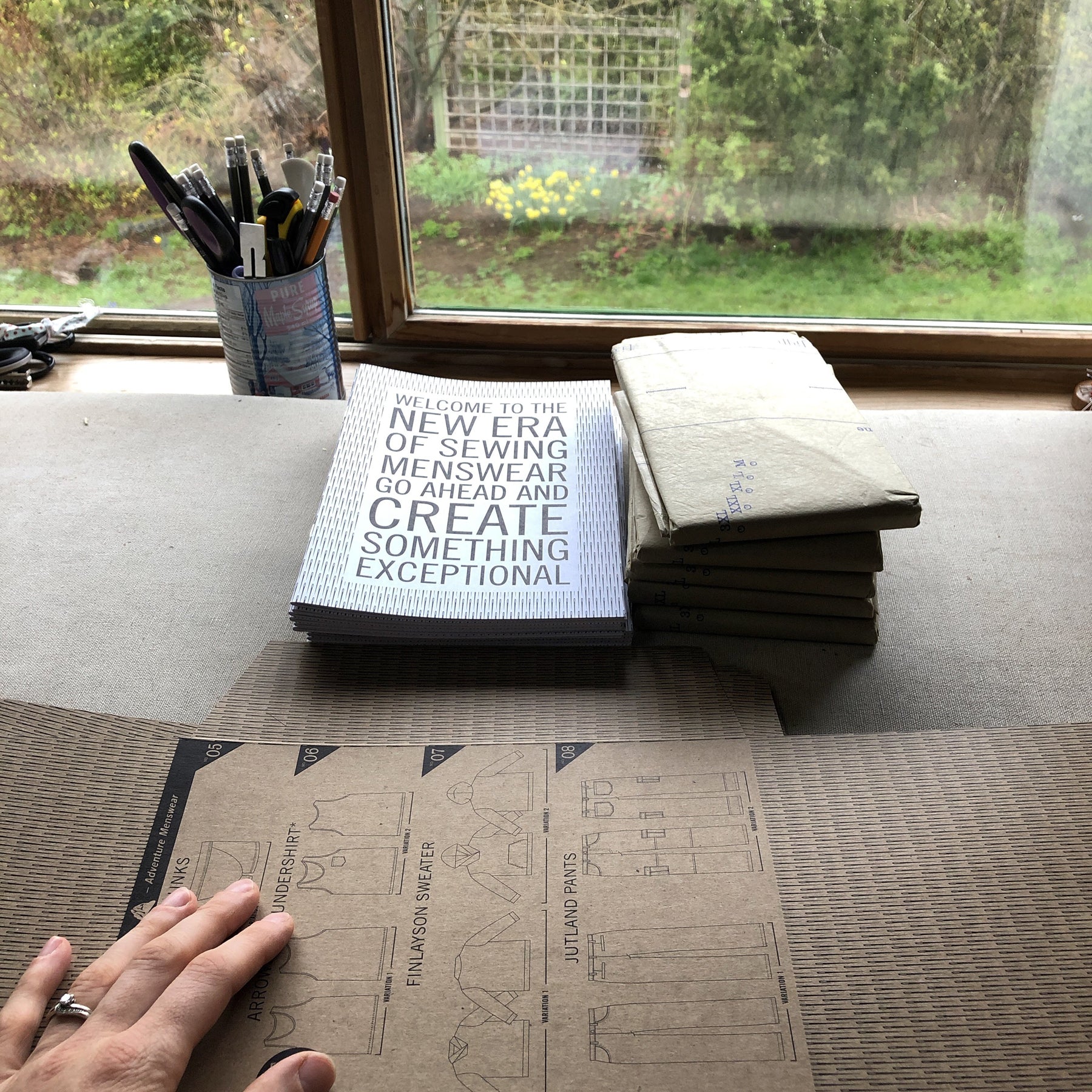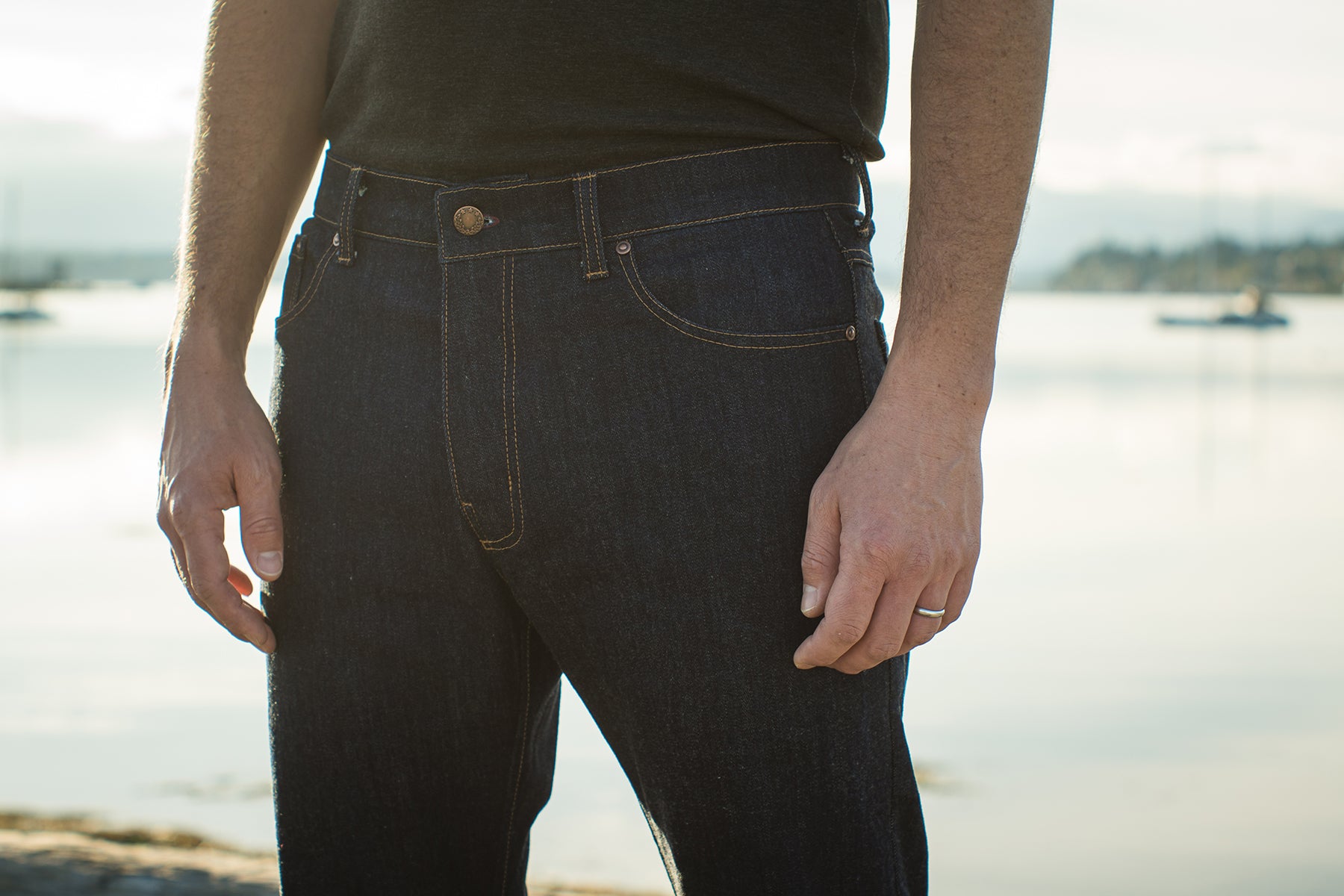At flea markets, I often pick up vintage home-sewing patterns, intent on recreating retro looks in modern fabrics. But the truth is, patterns haven’t evolved that much.
In conventional fabric stores, the familiar brands are pushing dated looks. Things your mom might wear. Though, as traditional textile crafts have been finding new fans among gen Xers and millennials, modern pattern makers like Colette andBy Hand London已经获得牵引力。
Updated menswear options, though, are still largely limited.
When Matt and Morgan Meredith discovered thismarket gap, they decided to build a career around it, elevating the standard of menswear patterns with their brand,Thread Theory. Alongside the product, they were selling an idea:sewing was for anyone. Could they reach and inspire a community of home-sewing men?

The couple, originally fromVancouver Island, Canada, were career nomads when they drove across the expansive country in 2011 to live on its east coast for a while. The move was part of a larger desire for change. Matt had a degree in music and bounced around in part-time jobs, while Morgan, a history and sociology major, was developing a hobby into a growing sewing blog. At the time, she wanted to make clothes for her husband and couldn’t find decent patterns. They were too feminine, Matthew says. “They just felt really dated and kind of tacky. You know, the father-son pajama sets and boxers.”

Since the pair had already toyed with starting a business together, this challenge created opportunity. Morgan, who was a skilled self-taught sewer, enrolled in fashion design school to learn pattern-making, while Matt took a four-day course in small business management. They started Thread Theory on a shoestring budget, developing PDF patterns by night while still depending on day jobs to make ends meet.
Just over six years later—and settled back out west—the company is now their full-time gig, run from their home. They’ve built up their proprietary pattern collection to 18 designs, selling them (along with a haberdashery of sewing supplies) to retail clients and customers around the world, including in Hungary and Australia.
Thread Theory aimed to appeal to men, but aside from a few long-standing customers, most are still women.
Morgan and Matt have met their goal of building a business together that supports their growing family (including a “baby of a dog” and their infant son, Noah). But the men’s sewing community they envisioned just hasn’t materialized. Though the menswear brand has a purposeful masculine feel, with muted color palettes and neutral, minimal packaging, almost all of the customers are female, Matt says.

It’s likely indicative of the typical home-sewing customer, and a holdover from traditional roles. “If you are a man who is open about being into sewing today, I probably know you,” says Joost de Cock, founder of Freesewing, an open-source platform for sharing sewing patterns. His site skews toward menswear, but only because he says he’s better at it.
Joost doesn’t blame the broader community for the lack of men picking up the craft. In fact, he calls it “very welcoming.” The challenge, according to him, is the stigma that exists—the idea that sewing is still just a women’s hobby.
We get a huge amount of requests for durable workwear. So, women’s patterns but with a menswear feel for them.
Because of the unexpected customer base, Thread Theory has had to make some compromises. When a photo of women’s pants and a blouse (designed by Morgan for her graduation show) appeared on the Thread Theory blog, customers demanded it. The couple resisted at first. “We really wanted to just stick to the menswear,” says Matt. “We were peer-pressured into [womenswear], but we were really happy we did it.”
Now their customers want more, such as durable workwear for women but with a menswear feel. They’re still wrestling with the decision, though another brand has already keyed in on the demand for menswear styles for women.Kirrin Finch, a New York City label created by Kelly and Laura Moffat, was born out of the couple’s own frustration with menswear that didn’t fit the proportions of their bodies, and womenswear they found too feminine.
Through their online store, Kelly and Laura sell locally made Oxford button-downs and chinos—cut for curves—to women around the world.
Matt and Morgan haven’t strayed much from their beginnings, but they have refocused their home-sewing community efforts away from being gender-specific. They’re still hopeful, Matt says. “A lot of guys are like me, and if they want to start doing something, they go to Google tutorials.” So, the Thread Theory website features “sew-alongs”—step-by-step visual guides—for each pattern. “We think things like that are what will encourage men to pick [it] up and try it out.”
在2018年末,马特接管day-to-day while Morgan has kept her hands full with the new baby (though “she's able to sneak away during naps,” Matt says). He’s even quit his part-time gig at the fire station to dedicate all of his time to Thread Theory. When I ask Matt if this means he’ll have to pick up slack in the sewing role, too—and be an example for other men—he admits he’s personally not cut out for it. “I tried. I’m very finicky and particular, [and] I just drove Morgan nuts because I was going so slow. It didn’t go very far.”
Photography courtesy of Thread Theory

